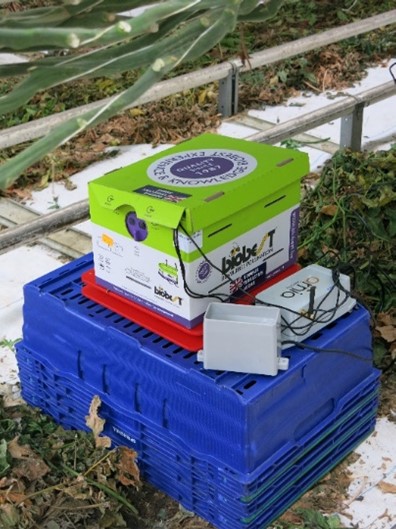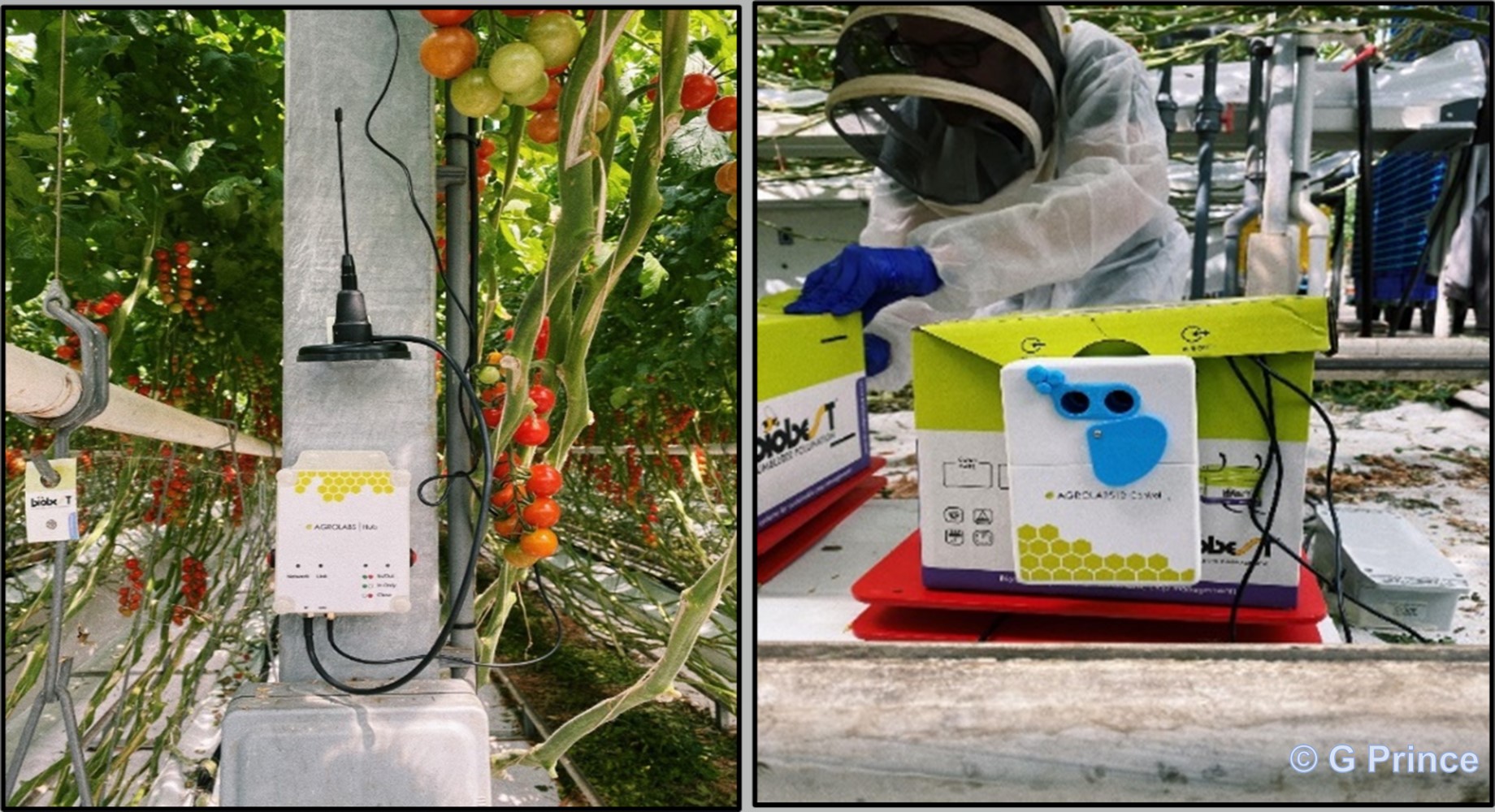Please click here to access the main AHDB website and other sectors.
- Home
- Knowledge library
- Remote monitoring of activity in Bombus terrestris audax colonies
Remote monitoring of activity in Bombus terrestris audax colonies
Read about the studies carried out to examine the effect of temperature on the within-hive activity of Bombus terrestris.
What is remote monitoring?
An important task in this project was to develop a method of remotely monitoring Bta activity that could be used as an experimental tool in future studies and as an aid to managing bumblebee colonies in commercial crops.
The initial work was done in collaboration with ‘Arnia Hive Monitors’ in an attempt to adapt their successful honeybee remote monitoring system (HRMS) to work with bumblebee hives. The HRMS records changes in honeybee hive weight, brood temperature / humidity, outside temperature / rainfall and bee colony acoustic data. The latter provides an indication of whether the bees are foraging normally or performing other tasks such as ‘fanning’ to cool the brood. Data is recorded in real time, continuously uploaded to the ‘Cloud’ via a portal and accessed remotely in the researchers’ / managers’ own offices.
During 2021, an additional type of bumblebee monitor became available and was trialled in commercial crops. The ‘Agrolabs B-control Monitor’ (https://agrolabs.io/) attaches directly to the front of a hive and uses an infra-red beam to directly count the entry and exit of individual bees to the hive. The data is transmitted wirelessly to a relay station within the glasshouse and then to the cloud over the mobile phone network. The bee counter comes with different adaptors which are designed to fit the entrances of different makes of beehive. The counter has an entrance cover which can be controlled remotely – so that hives can be shut remotely at night and the bees kept within the hive if there is pesticide spraying the next day.
Attempts to adapt the Arnia Honeybee Remote Monitoring System
Preliminary studies, which tested adapted HRMS units at three sites, highlighted the following aspects which required further refinement:
- Consistency of hive weight readings at different temperatures
- Accuracy of temperature probes
- Sensitivity of sound recording to cope with the smaller quieter Bta colonies and to eliminate background noise.
During 2021, HRMS units were set up in a controlled environment room and data was sent to Arnia to (i) adjust settings on load cells and environmental probes to ensure consistent and uniform performance, (ii) recalibrate load cells so that weight readings could be adjusted for fluctuations in temperature, and (iii) the microphones were modified to exclude external noise.
Recalibrated units were then placed under bumblebee hives in a commercial tomato crop from which data was collected and interrogated remotely (Figure 1). Although the weights of the colony could be measured accurately to give a measurement of colony health they were not sensitive enough to determine the activity of bees leaving and entering hives. Moreover, the microphone failed to pick up diurnal changes in the sound within the hives compared to a ‘dummy’ hive that we set up containing no bees.
We were unable to obtain consistent and reliable results with the adapted Arnia HRMS system when used with bumblebee colonies in this project. This was probably because the colonies were much smaller than honeybee colonies and housed in considerably lighter structures.

Figure 1. Adapted Arnia HRMS in situ. © Dr R J Jacobson.
In-crop evaluation of the Agrolabs B-control monitor
There were some initial difficulties related to obtaining a consistent mobile phone signal for the relay. These were resolved by changing network provider to the one that had the strongest signal in the area and by careful positioning of the relay within the glasshouse. Once the system was operational it gave us good data and we were able to record bee traffic continually over several weeks with the dashboard providing a summary of bees entering and leaving per hour. We ran a proof of concept trial in a commercial tomato crop in summer 2021 (Figure 2).

Figure 2. Agrolabs data relay located in glasshouse (left) and Agrolab monitor attached to a hive (right). © G Prince.
We concluded that the Agrolabs bumblebee remote monitoring system had potential to provide high quality, useful data for monitoring bumblebee traffic but would probably benefit from the addition of internal temperature and humidity probes to alert growers to adverse conditions.
Useful links
Got a question? Ask a member of the team
Authors
The content on this page was authored for AHDB by Dr D Chandler, Mrs G Prince and Dr Rob Jacobson (Rob Jacobson Consultancy Ltd), .

